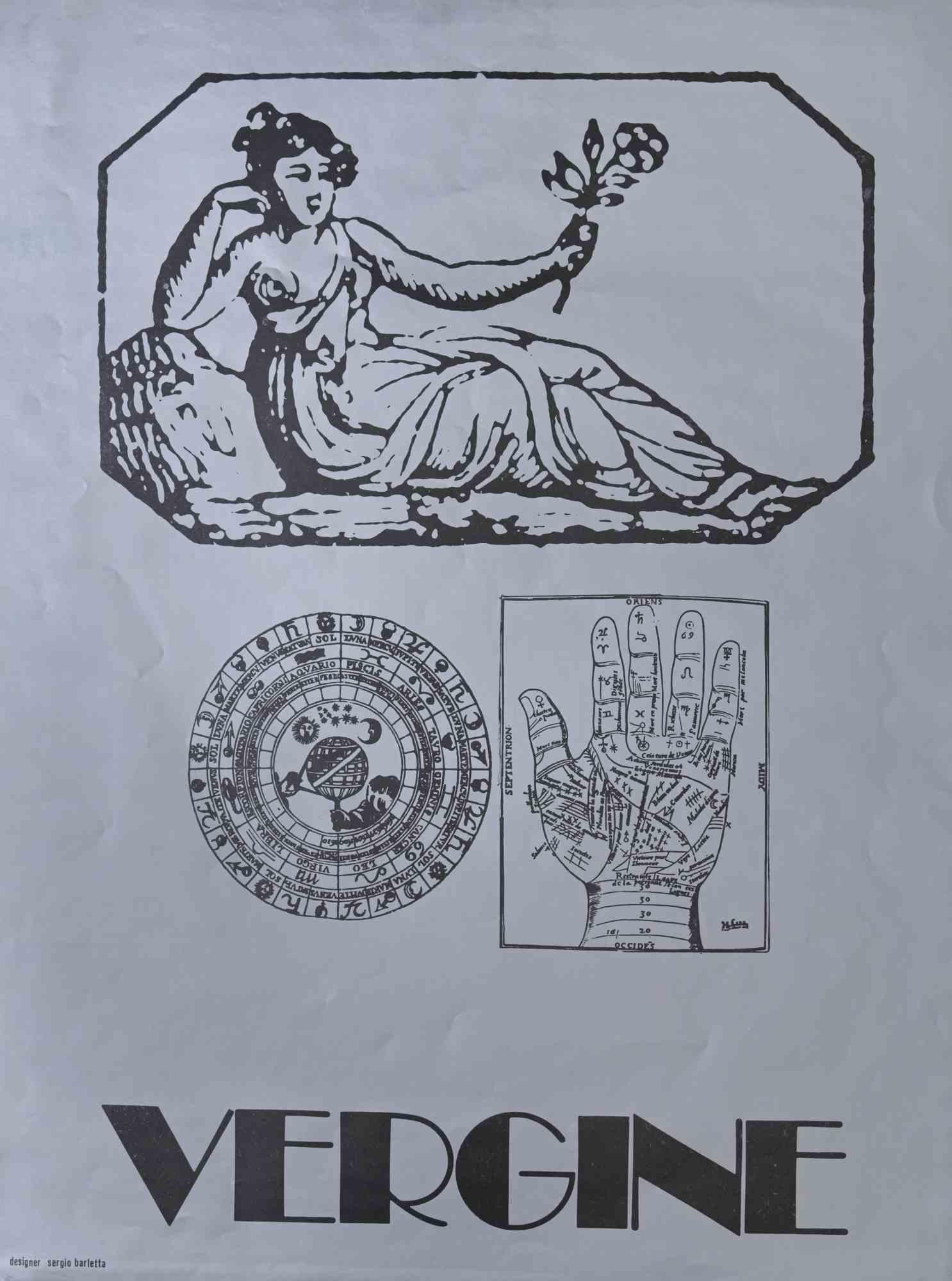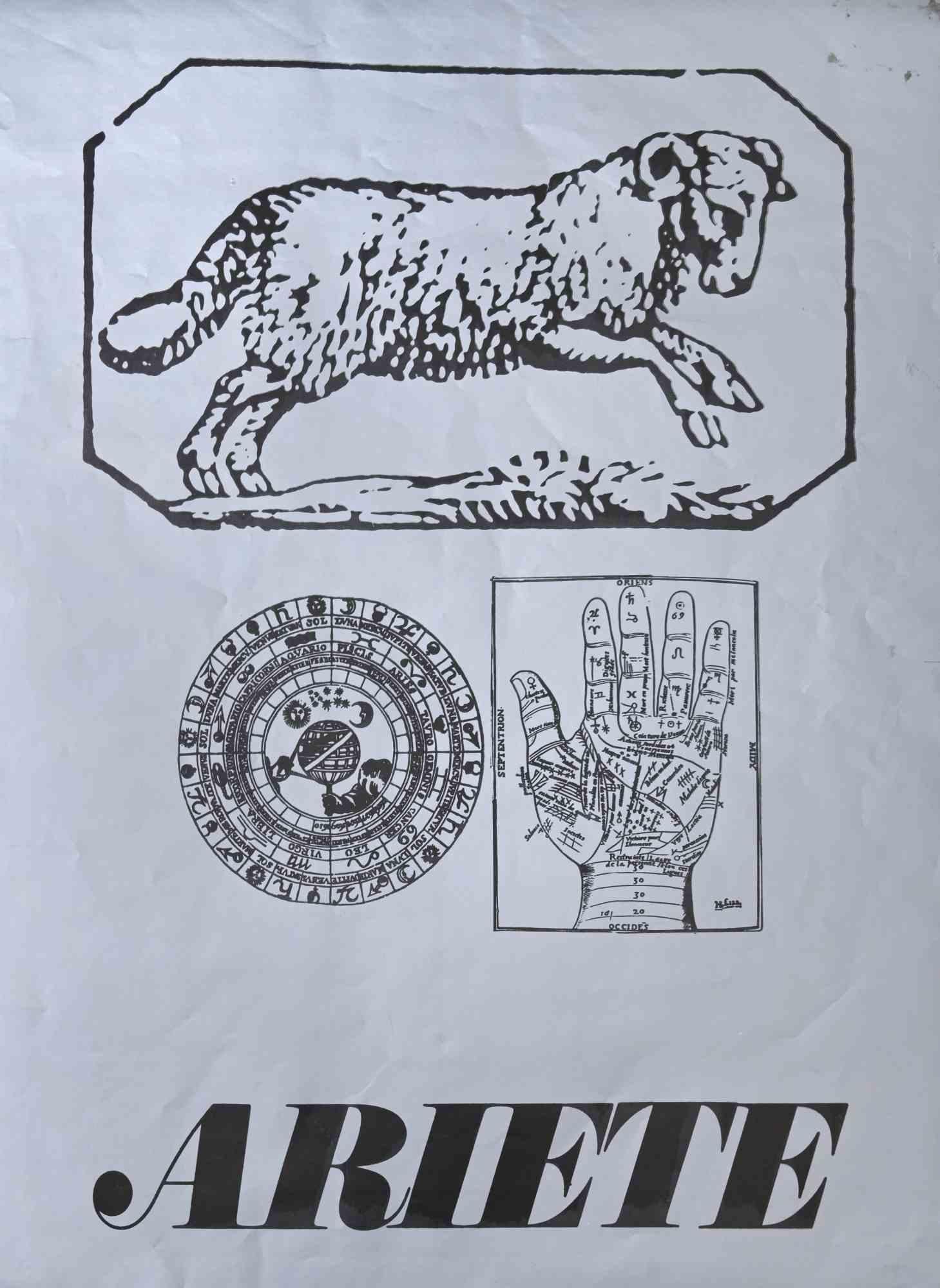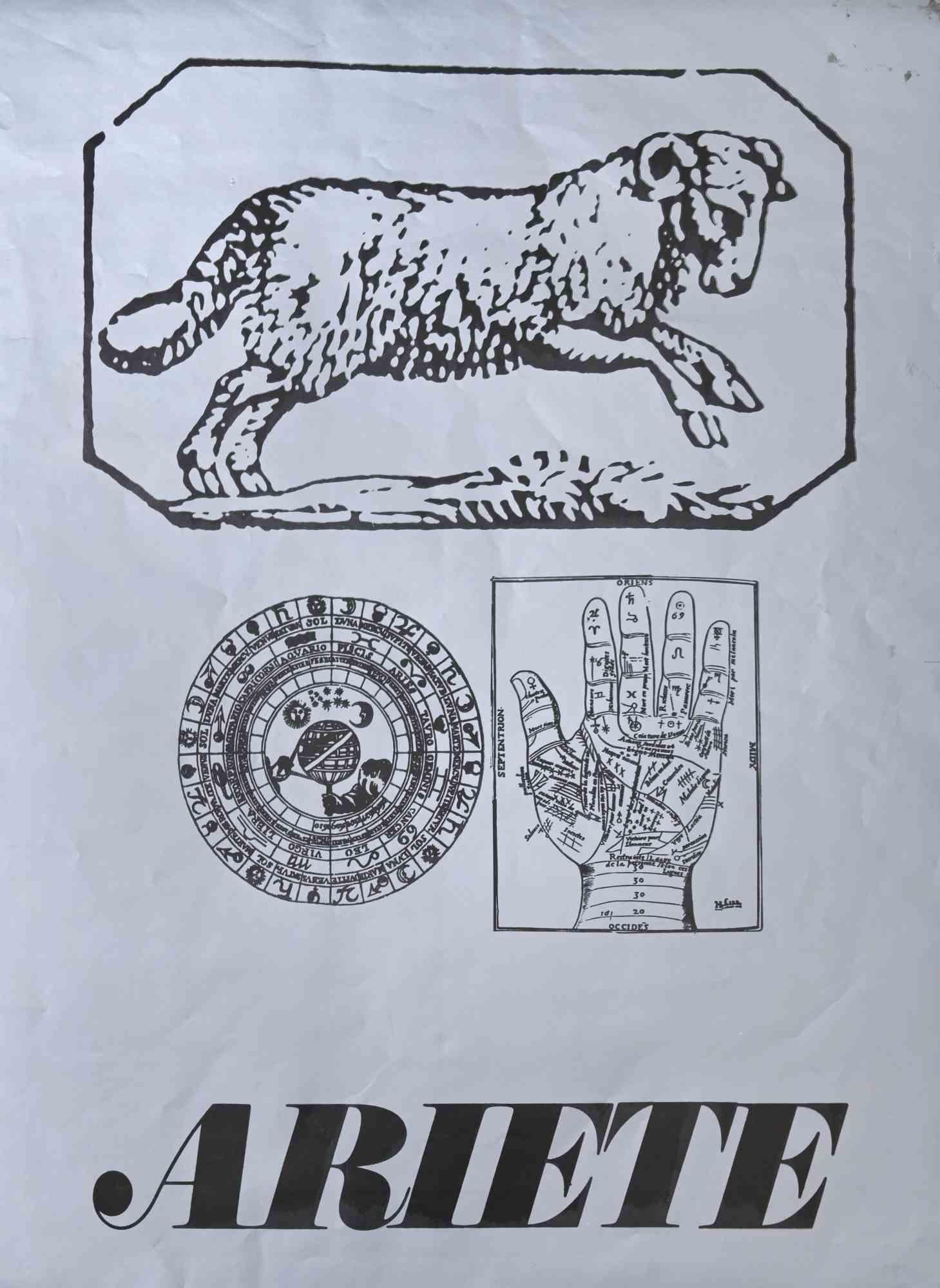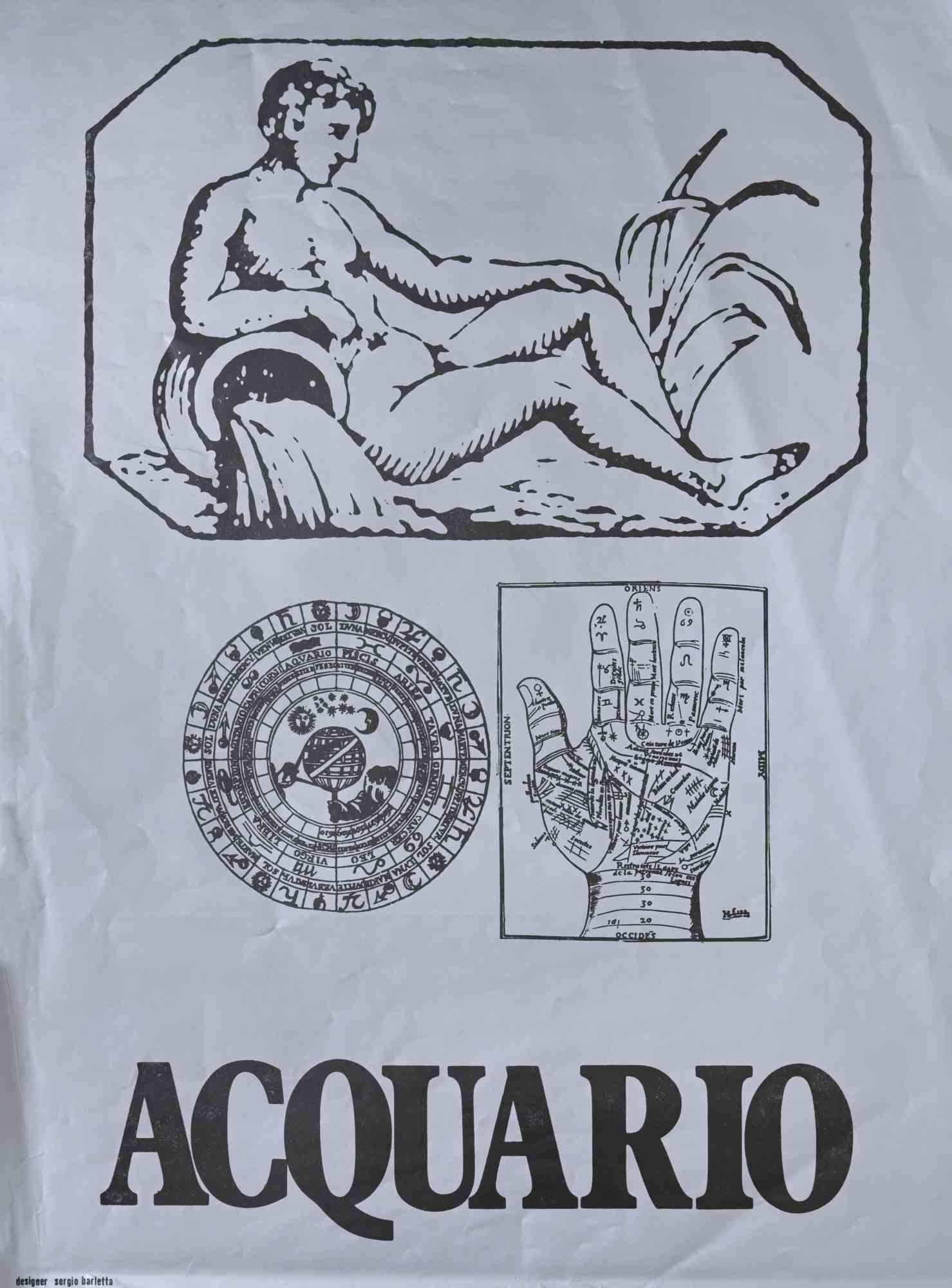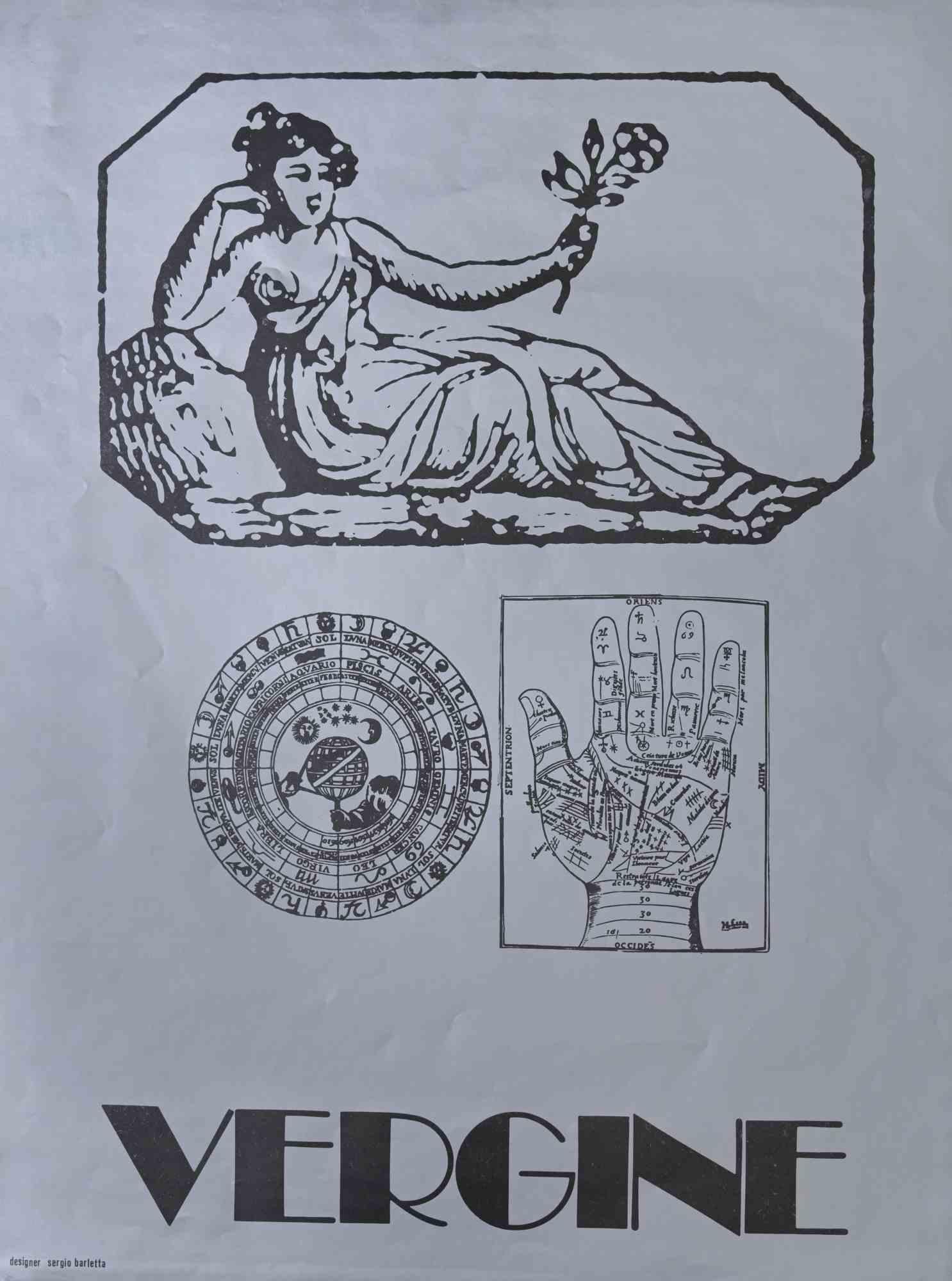Items Similar to Ex Libris - Van Den Berg - Colij - Screenprint - 1979
Want more images or videos?
Request additional images or videos from the seller
1 of 3
UnknownEx Libris - Van Den Berg - Colij - Screenprint - 19791979
1979
About the Item
Ex Libris - Van Den Berg - Colijn is a Modern Artwork realized in 1979.
Ex Libris. Screenprint on paper. Dated on the right margin.
The work is glued on ivory cardboard.
Total dimensions: 20x 15 cm.
Good conditions except some signs of aging.
The artist wants to define a well-balanced composition, through preciseness and congruous colors.
- Creation Year:1979
- Dimensions:Height: 3.75 in (9.5 cm)Width: 2.56 in (6.5 cm)Depth: 0.04 in (1 mm)
- Medium:
- Movement & Style:
- Period:
- Framing:Framing Options Available
- Condition:Insurance may be requested by customers as additional service, contact us for more information.
- Gallery Location:Roma, IT
- Reference Number:Seller: T-1410081stDibs: LU650312749272
About the Seller
4.9
Platinum Seller
These expertly vetted sellers are 1stDibs' most experienced sellers and are rated highest by our customers.
1stDibs seller since 2017
6,757 sales on 1stDibs
Typical response time: 2 hours
- ShippingRetrieving quote...Ships From: Grasse, France
- Return PolicyA return for this item may be initiated within 14 days of delivery.
Auctions on 1stDibs
Our timed auctions are an opportunity to bid on extraordinary design. We do not charge a Buyer's Premium and shipping is facilitated by 1stDibs and/or the seller. Plus, all auction purchases are covered by our comprehensive Buyer Protection. Learn More
More From This SellerView All
- Meadow with Poppies - Screen Print by Maddalena Striglio - Late 20th centuryLocated in Roma, ITMeadow with Poppies is a very brightly colored screen print realized by the contemporary Italian artist Maddalena Striglio in the late 20th Century. Hand-signed in pencil on the lo...Category
Late 20th Century Modern Landscape Prints
MaterialsScreen
- Michelagnolo - Screen print by Mino Trafeli - 1984Located in Roma, ITScreenprint, numbered and signed, by the Italian artist Mino Trafeli (Volterra, Italy 1922-2018). Part of a portfolio of 13 5-color serigraphs made by Mino Trafeli and printed, with...Category
1980s Modern Figurative Prints
MaterialsPaper, Screen
- Libra - Screen Print by Sergio Barletta - 1973By Sergio BarlettaLocated in Roma, ITLibra is a screen print on grey paper realized by Sergio Barletta. Signed on the lower left margin. In good conditions except for fairly consumed edges. The artwork represents t...Category
1970s Modern Figurative Prints
MaterialsScreen
- Pisces - Screen Print by Sergio Barletta - 1973By Sergio BarlettaLocated in Roma, ITPisces is a screen print on grey paper realized by Sergio Barletta. Signed on the lower left margin. In good conditions except for fairly consumed edges. The artwork represents ...Category
1970s Modern Figurative Prints
MaterialsScreen
- Eros and Thanatos - Etching by Sergio Barletta - 1970sBy Sergio BarlettaLocated in Roma, ITEros and Thanatos is an Etching realized by Sergio Barletta in the Early 1970s. Good conditions. Hand-signed. Numbered. Edition, 44/100 The artwork is depicted through a well-ba...Category
1970s Modern Figurative Prints
MaterialsScreen
- Libra - Screen Print by Sergio Barletta - 1973By Sergio BarlettaLocated in Roma, ITLibra is a screen print on grey paper realized by Sergio Barletta. Signed on the lower left margin. In good conditions except for fairly consumed edges. The artwork represents the...Category
1970s Modern Figurative Prints
MaterialsScreen
You May Also Like
- Poet L. Strelevits portrait. 1972, paper, screen print, 69x51 cmLocated in Riga, LVPoet L. Strelevits portait. 1972, paper, screen print, 69x51 cm Dzidra Ezergaile (1926-2013) Born in Riga. School years alternate with summer work in the countryside. In 1947, she b...Category
1970s Modern Portrait Prints
MaterialsPaper, Screen
- El Herido, 1960's Spanish Avant Garde Political Screenprint Lithograph SignedBy Rafael CanogarLocated in Surfside, FLThe Wounded One (El Herido) from Violence (La Violencia) 1969 signed, dated and titled in pencil Dimensions: sheet: 22 1/16 x 30 1/16" (56 x 76.4cm) Rafael Canogar ( Toledo , 1935) is a Spanish painter, one of the leading representatives of abstract art in Spain. Disciple of Daniel Vazquez Díaz (1948-1953), in his first works he found a way to reach the avant garde and, very soon, to study abstraction deeply. He initially used a sculpture technique: with his hands he scratched or squeezed the paste that vibrated on flat colored backgrounds. It was a painting in which the initial gesture comes directly from the heart. At this point, Canogar embodied the best of painting material . In 1957 he founded with other artists the EI Paso group. With artists like Luis Feito, Manolo Millares, Pablo Serrano, Manuel Rivera and Antonio Saura, he begins the Spanish avant-garde movement and continues to do so until 1960. It is influenced by Action painting. They defended, between 1957 and 1960 , an informal aesthetic and the opening of Franco Spain...Category
1960s Modern Abstract Prints
MaterialsScreen
- Modernist Silkscreen Screenprint 'El Station, Interior' NYC Subway, WPA ArtistBy Anthony VelonisLocated in Surfside, FLscreenprint printed in color ink on wove paper. New York City subway station interior. Anthony Velonis (1911 – 1997) was an American painter and designer born in New York City who helped introduce the public to silkscreen printing in the early 20th century. While employed under the federal Works Progress Administration, WPA during the Great Depression, Velonis brought the use of silkscreen printing as a fine art form, referred to as the "serigraph," into the mainstream. By his own request, he was not publicly credited for coining the term. He experimented and mastered techniques to print on a wide variety of materials, such as glass, plastics, and metal, thereby expanding the field. In the mid to late 20th century, the silkscreen technique became popular among other artists such as Robert Rauschenberg and Andy Warhol. Velonis was born into a relatively poor background of a Greek immigrant family and grew up in the tenements of New York City. Early on, he took creative inspiration from figures in his life such as his grandfather, an immigrant from the mountains in Greece, who was "an ecclesiastical painter, on Byzantine style." Velonis attended James Monroe High School in The Bronx, where he took on minor artistic roles such as the illustration of his high school yearbook. He eventually received a scholarship to the NYU College of Fine Arts, into which he was both surprised and ecstatic to have been admitted. Around this time he took to painting, watercolor, and sculpture, as well as various other art forms, hoping to find a niche that fit. He attended NYU until 1929, when the Great Depression started in the United States after the stock market crash. Around the year 1932, Velonis became interested in silk screen, together with fellow artist Fritz Brosius, and decided to investigate the practice. Working in his brother's sign shop, Velonis was able to master the silkscreen process. He reminisced in an interview three decades later that doing so was "plenty of fun," and that a lot of technology can be discovered through hard work, more so if it is worked on "little by little." Velonis was hired by Mayor LaGuardia in 1934 to promote the work of New York's city government via posters publicizing city projects. One such project required him to go on a commercial fishing trip to locations including New Bedford and Nantucket for a fortnight, where he primarily took photographs and notes, and made sketches. Afterward, for a period of roughly six months, he was occupied with creating paintings from these records. During this trip, Velonis developed true respect and affinity for the fishermen with whom he traveled, "the relatively uneducated person," in his words. Following this, Velonis began work with the Public Works of Art Project (PWAP), an offshoot of the Civil Works Administration (CWA), where he was assigned to serve the different city departments of New York. After the formation of the federal Works Progress Administration, which hired artists and sponsored projects in the arts, he also worked in theater. Velonis began working for the federal WPA in 1935. He kept this position until 1936 or 1938, at which point he began working in the graphic art division of the Federal Art Project, which he ultimately led. Under various elements of the WPA program, many young artists, writers and actors gained employment that helped them survive during the Depression, as well as contributing works that created an artistic legacy for the country. When interviewed in December 1994 by the Library of Congress about his time in the WPA, Velonis reflected that he had greatly enjoyed that period, saying that he liked the "excitement" and "meeting all the other artists with different points of view." He also said in a later interview that "the contact and the dialogue with all those artists and the work that took place was just invaluable." Among the young artists he hired was Edmond Casarella, who later developed an innovative technique using layered cardboard for woodcuts. Velonis introduced silkscreen printing to the Poster Division of the WPA. As he recalled in a 1965 interview: "I suggested that the Poster division would be a lot more productive and useful if they had an auxiliary screen printing project that worked along with them. And apparently this was very favorably received..." As a member of the Federal Art Project, a subdivision of the WPA, Velonis later approached the Public Use of Arts Committee (PUAC) for help in "propagandizing for art in the parks, in the subways, et cetera." Since the Federal Art Project could not be "self-promoting," an outside organization was required to advertise their art more extensively. During his employment with the Federal Art Project, Velonis created nine silkscreen posters for the federal government. Around 1937-1939 Velonis wrote a pamphlet titled "Technical Problems of the Artist: Technique of the Silkscreen Process," which was distributed to art centers run by the WPA around the country. It was considered very influential in encouraging artists to try this relatively inexpensive technique and stimulated printmaking across the country. In 1939, Velonis founded the Creative Printmakers Group, along with three others, including Hyman Warsager. They printed both their own works and those of other artists in their facility. This was considered the most important silkscreen shop of the period. The next year, Velonis founded the National Serigraph Society. It started out with relatively small commercial projects, such as "rather fancy" Christmas cards that were sold to many of the upscale Fifth Avenue shops...Category
1980s American Modern Figurative Prints
MaterialsScreen
- Israeli Expressionist Yosl Bergner Modernist Lithograph Kibbutz Coffee GrinderBy Yosl BergnerLocated in Surfside, FLAbstract Composition, Coffee Grinder Hand signed in Hebrew Lower right. limited edition. Dimensions: H 18.5" x 24.9" Bergner, Yosl (Vladimir Jossif) (b Vienna, 13 Oct 1920). surrealist, surrealism. belongs to the generation of people uprooted from childhood landscapes and forced by circumstance to build a life elsewhere. Uniquely, he became an Israeli without shedding his Jewish cosmopolitan-refugee identity, an identity he zealously guarded in the melting pot of Israel of the "fifties" and "sixties". In the years that have passed since he acquired his art education at the Melbourne National Gallery Art School in Australia, concepts in the art world have changed many times over. from the Jewish paintings and the depictions of Australian Aborigines through the children of safed, the wall paintings, the masks, the angels and kings, the still lifes, the "Surrealistic" paintings, the toys and flowers, the paintings inspired by the Bird-head Haggadah, the Kafka paintings, the Pioneers, the Kimberley fantasy (about his father's excursion in 1933 to northern Australia, in search of a "territory for the Jews"), Brighton Beach and the seascapes inspired by Eugene Boudin, through the chairs in the "Kings of Nissim Aloni" episode to the "Zionists" and the recent "Tahies". "During the six years that Bergner has lived in Israel," wrote Eugene KoIb, Direct. or of the Tel Aviv Museum, in the catalog of the Bergner exhibit in 1957, "he has established himself among Israeli artists." Bergner was indeed one of the artists who represented Israel in the Venice Biennial (1956; 1958) and in the Sao Paulo Biennial in 1957; this, in spite of the fact that Yosl Bergner did not harness his art to serve the Zionist ethos, that being, at the time, the order of the day (his paintings were in fact rejected at first as being those of a "Diaspora Jew"); he didn't "naturalize" himself by alliance to the country's landscape or its special light, nor did he turn to abstract painting. Painter of "the Jewish condition". the painter involved in Nissim Aloni's theater and the popular illustrator of poetry books and literary texts, he stuck to the narrative which drew its images from his childhood world, from Yiddish and from the Jewish culture of Poland in whose bosom he grew, with its literature, theater and fantasy. From this point of view his position as an "outsider", first in Australia and later in Israel, like that of the European Jew on the periphery of the dominant culture, afforded him a special dialectic vantage point from which to view his human and cultural surroundings. He was and remains a figurative painter even when he verges on the abstract. Israeli painter of Austrian birth, active in Australia. He grew up in Warsaw. His father, the pseudonymous Jewish writer Melech Ravitch, owned books on German Expressionism, which were an early influence. Conscious of rising anti-Semitism in Poland, Ravitch visited Australia in 1934 and later arranged for his family to settle there. Bergner arrived in Melbourne in 1937. Poor, and with little English, his struggle to paint went hand-in-hand with a struggle to survive. In 1939 he attended the National Gallery of Victoria’s art school and came into contact with a group of young artists including Victor O’Connor (b 1918) and Noel Counihan...Category
Mid-20th Century Modern Figurative Prints
MaterialsScreen, Lithograph
- 1970s Pop Art "Dancing Lessons #2" Silver Silkscreen Mod Ballet Girl PrintBy Joanne SeltzerLocated in Surfside, FLPrinted on a slightly reflective metallic silver finished paper. there is a companion piece on a money green paper. A depiction of a ballet dancer, superimposed upon canceled dance c...Category
1970s American Modern Portrait Prints
MaterialsScreen
- 'Abstract Boats' — 1930s American Modernism, WPABy Leon BibelLocated in Myrtle Beach, SCLeon Bibel, 'Abstract Boats', color serigraph, 1938, edition 12. Signed, dated, and numbered ' /12' in pencil. A fine, painterly impression, with fresh colors, on buff wove paper; t...Category
1930s American Modern Figurative Prints
MaterialsScreen
Recently Viewed
View AllMore Ways To Browse
Murakami Editions Of 50
Long Wooden Settle
Vintage Morocco Travel Posters
Early American End Tables Of The 70s
Vintage Milk Pitcher
Vintage Milk Pitchers
German Antique Tea Set Silver
Large Footed Fruit Bowl
T50 Armchair
Vintage Plane Clock
Circular Love Seats
Vintage Metal Dinner Plates
La Rocca
Vintage Railroad Collectables
Vintage Railroad Collectibles
Black Clay Pot Weather
Vintage Railroad Maps
Picasso Woman In A Hat
